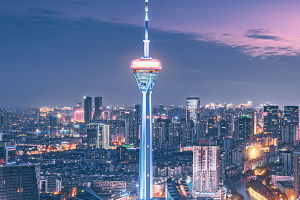When night falls, the city lights intertwine with the starry sky, offering photographers a palette of vibrant shooting opportunities.
However, capturing stunning night photos, particularly for novice photographers, can be quite challenging.
Nevertheless, by mastering some fundamental night photography techniques, you can swiftly elevate your skill level. Here Lykkers, Let‘s introduce several basic techniques to help you grasp the essence of night photography.
1. Utilize a Tripod: Shooting in low light conditions requires stable camera support to counteract the longer shutter speeds. Utilizing a tripod is essential to prevent blurry images caused by camera shake.
2. Adjust ISO Sensitivity: Properly adjusting the ISO sensitivity can effectively control the brightness of your photos. Opt for lower ISO values, such as 100 or 200, to minimize noise and maintain image quality in night scene photography.
3. Master Long Exposure Techniques: Night photography often demands longer exposure times to capture intricate details of light. Experiment with slower shutter speeds, such as 1 second or longer, to unveil the unique play of light and shadow in urban nightscapes.
4. Manage White Balance: White balance settings play a pivotal role in night scene photography. Selecting the appropriate white balance mode, such as "Incandescent" or "Fluorescent," ensures color accuracy and authenticity in your images.
5. Optimize Depth of Field: Achieving an adequate depth of field is crucial in night photography to ensure sharpness throughout the frame. Choose smaller aperture values, ranging from f/8 to f/16, to expand the depth of field and enhance image clarity.
6. Experiment with Composition: Composition angles and perspectives greatly influence the visual impact of night photos. Explore various angles to capture diverse and captivating compositions, adding depth and interest to your images.
7. Leverage Distance and Proximity: Contrast between distant and nearby elements enhances the depth and dimensionality of night scene photos.
Incorporate distant landmarks or cityscapes as a backdrop, while utilizing nearby objects or structures as foreground elements to create dynamic and compelling compositions.
8. Practice and Reflect: Continuous practice and reflection are key to honing your night photography skills. Experiment with shooting at different times and locations, analyze your results and learn from both successes and failures to refine your technique.
By mastering these fundamental techniques, you can swiftly enhance your proficiency in night scene photography. Remember, photography is an art form that thrives on experimentation and practice.
Trust your instincts, embrace experimentation, and you'll soon capture breathtaking night scenes that showcase your creative vision!


